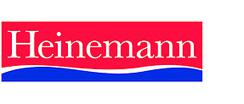- View more resources from this publisher
 University of York Science Education Group (UYSEG)
University of York Science Education Group (UYSEG)
Introduction: a Bridge from Key Stage Two to Key Stage Three
Students arriving in Year Seven may bring with them very different experiences of science. This unit from Salters' Science Focus is composed of over 50 short activities, divided into nine sections, which can be used as a ‘pick-and-mix’ resource to introduce students to the procedures and equipment in a secondary school laboratory and bring all of their experiences to a suitable level for further work in the remainder of the course. Altogether, the Introduction unit is designed to occupy the first term at secondary school. The context for the unit is the lives and activities of people living in a residential square.
Every section of this unit is built around hands-on practical activities to bring out the underlying science concepts.
Sections cover:
1. What will you be doing in science? A circus of activities to introduce different apparatus and materials in the lab
2. The street party: practical activities on freezing, melting and dissolving
3. Searching for solutions: liquids other than water; introduction to hazard warning signs; stain removers; solubility of different substances in water; differences between solutions and suspensions
4.Freezing, melting and boiling: changes of state; freezing as a way of preserving food; use of salt on icy roads
5. Things are warming up: design and make thermometers; thermochromic materials; thermal expansion; comparison of thermal conductivity of solids
6. Variations on winter: variation between individuals; insulation in clothing or in animal fur, hair or feathers; investigation of snow burdens on plants; microscopic comparison of plant and animal cells; survey of how plants survive the winter
7. Changing substances: fizzing of ‘liver salts’; apple browning; setting of plaster of Paris shows energy changes; acids and alkalis
8. Designing a solar still: the need for fresh water; distilling water
9. Moving House: devising schemes for classifying different objects; introduction to some ways of classification.
Show health and safety information
Please be aware that resources have been published on the website in the form that they were originally supplied. This means that procedures reflect general practice and standards applicable at the time resources were produced and cannot be assumed to be acceptable today. Website users are fully responsible for ensuring that any activity, including practical work, which they carry out is in accordance with current regulations related to health and safety and that an appropriate risk assessment has been carried out.
Downloads
-
Salters' Science Focus: introduction 16.87 MB





